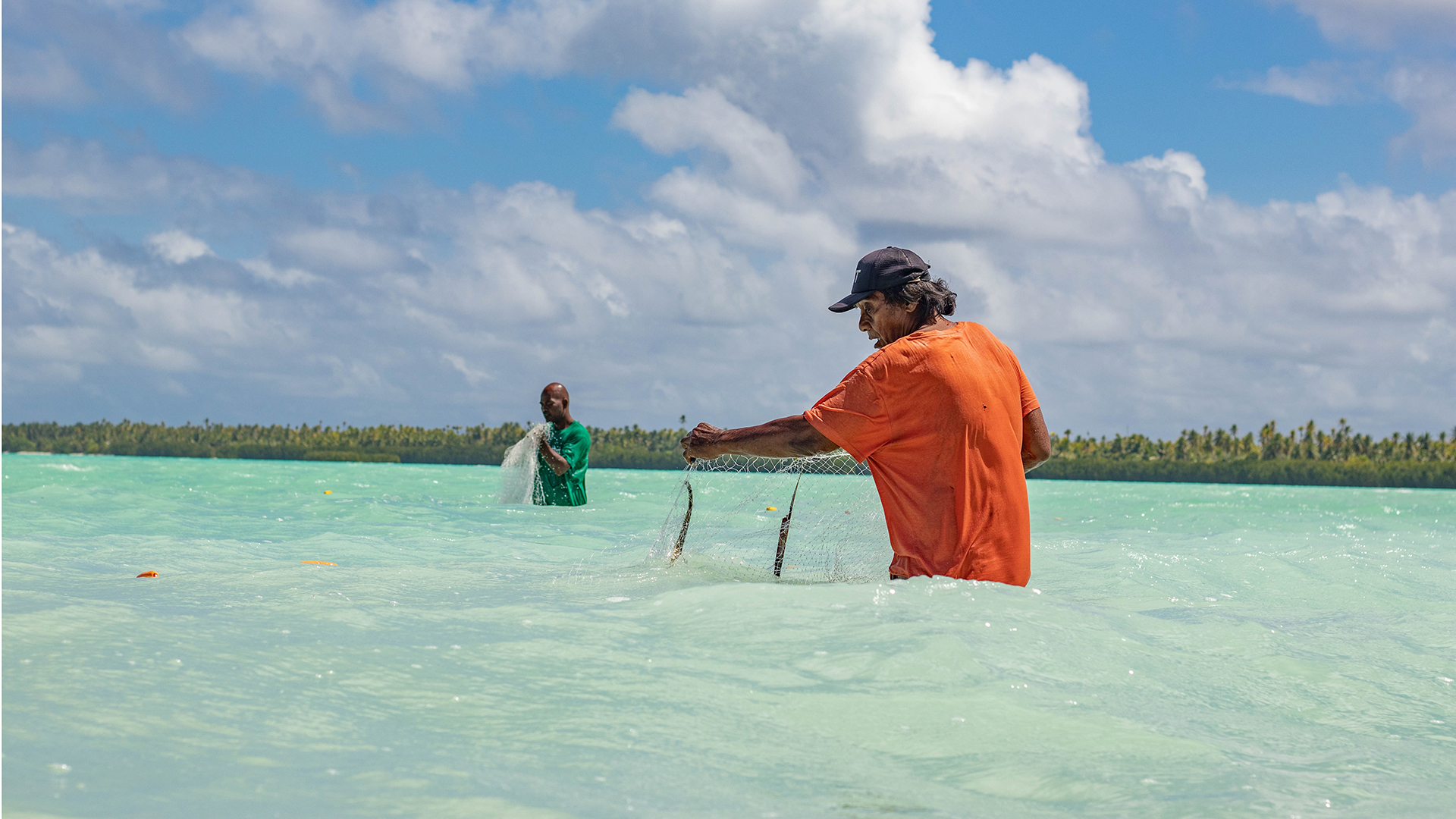Towards healthier and more nutritious diets in Pacific Small Island Developing States

The waters that surround the Small Island Developing States (SIDS) of the Pacific are home to remarkable marine ecosystems. The fish and other marine species they host are deeply intertwined with many Pacific peoples’ cultures, livelihoods and food. But while the communities of these islands continue to consume fish in significant quantities, the diversity of Islanders’ diets is declining, and their nutrition is deteriorating.
So, what are some new approaches and innovations that can help reverse this trend?
A report by the Food and Agriculture Organization of the United Nations (FAO) and WorldFish has some suggestions. Here are five of them:
1. Adapting to changing trends of faster, more convenient food
Pacific Islanders are eating more processed and canned foods because of urbanization, a desire for modernity, time constraints and lack of cold storage or long-term preservation options. In areas with limited opportunities to access marine resources or grow adequate crops, canned fish, for example, is an important and easy alternative for food and nutrition security.
Some researchers have advocated for more canned fish to be made available to Pacific communities as a way to alleviate pressure on nearshore ecosystems. However, the concern is that communities could miss out on some of the many micronutrients that are provided by a diverse diet of aquatic foods, a category which includes all types of fish, crustaceans, molluscs, other aquatic animals and algae grown in or harvested from water. FAO implements a wide range of nutrition awareness activities with Pacific SIDS to highlight the nutritional importance of consuming fish and other aquatic foods.
2. Using innovation to make further-afield fish stocks more accessible
Innovations can help improve the quality and variety of local diets. For example, anchored Fish Aggregating Devices (FADs), which are human-made structures deployed in offshore waters to attract fish, are a way of using technology that can help alleviate pressure on nearshore marine resources. These devices support food and nutrition security by making pelagic fish such as tuna, jobfish, mahimahi, barracuda and mackerel more accessible to fishers. Funded by the Government of Japan, FAO FishFAD programmes were implemented with communities across seven Pacific SIDS.
As rural economies increasingly become monetized, fishers may sell a greater proportion of catch to local or international markets, resulting in less for home consumption.
3. Balancing import and export of foods
As rural economies increasingly become monetized, fishers may sell a greater proportion of catch to local or international markets, resulting in less for home consumption.
So on multiple levels, there is a need for a greater understanding of net gains and losses from selling fish and seafood, as well as understanding better the potential of providing alternative sources of aquatic foods from aquaculture and mariculture activities. These data could inform management strategies and overall governance of fisheries in specific Pacific SIDS to ensure the availability of more nutritious fish and seafood within the region.
4. Gathering more specific data on food consumption
We need to collect more data on exactly which foods people are eating. If we only look at the broad category of “fish”, it is difficult to evaluate the nutritional contribution of different species, as nutrient content varies by species, parts consumed (whole fish vs. fillet only) and processing and preparation methods. FAO has supported some of the Pacific SIDS in collecting these valuable data.
5. Making nutrition education inclusive
Nutrition education needs to target everyone. The historical approach of focusing on women as the traditional meal preparers has inadvertently increased the burden of responsibility on them to ensure adequate nutrition in their households. Providing nutrition awareness to men, as they traditionally greatly influence village decisions, could have a positive impact on the dietary diversity of household members.
To increase awareness across communities, FAO has supported and helped popularize a smartphone app in Fiji providing information and suggestions on healthier foods.
A region-wide initiative, called the Pacific Island Food Revolution, has also supported the consumption of local foods through a reality television show, in which Pacific Islanders cook dishes, made with foods unique to their country and culture. Helping to promote the image of local foods as both “trendy” and healthy, this show is already reported to have led viewers in several islands to make changes in their diets toward more local foods.
As Pacific SIDS deal with the burden of under-nutrition, micronutrient deficiencies, over-nutrition and an increase in non-communicable diseases such as diabetes and hyper-tension, these approaches and innovations can be part of the solution in improving nutrition and health across the Pacific Islands region.
